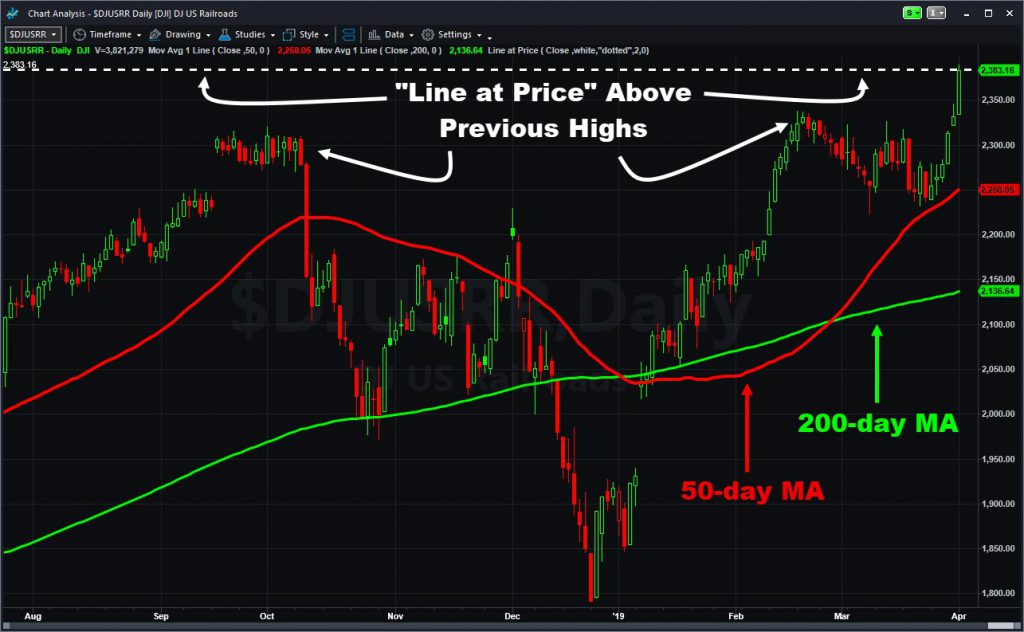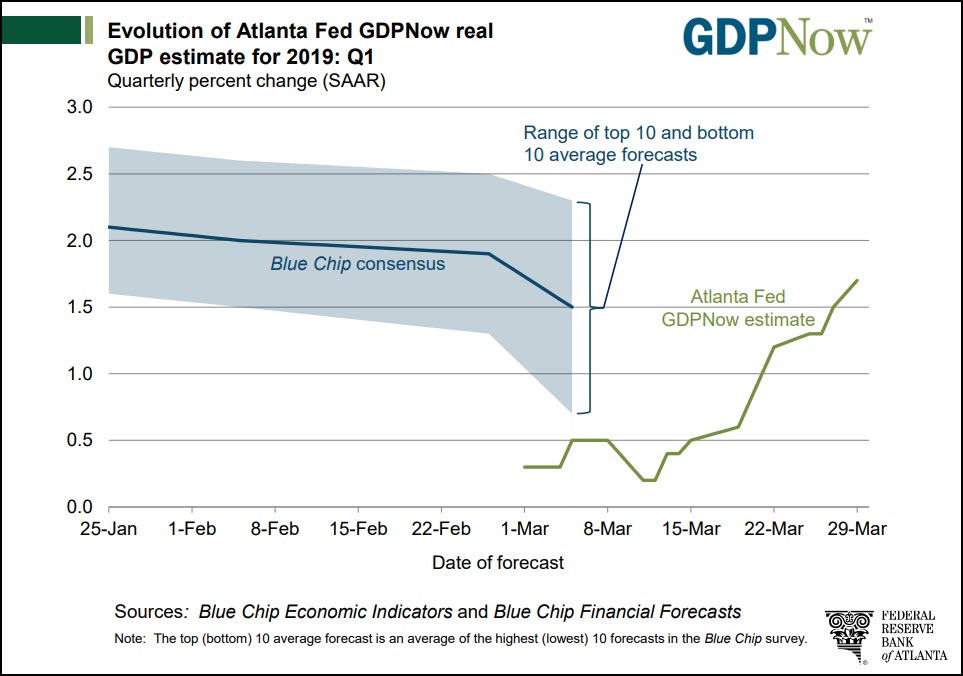Economists have worried about the economy slowing, but railroads are telling a different story.
The Dow Jones US Railroads Index ($DJUSRR) rose more than 2 percent today to a new all-time high. They’ve helped the broader transportation index ($DJT) and industrial sector (XLI) deliver more than twice the gain of the broader S&P 500 index in the last week.
Something deeper seems to be happening under the surface as signs of a stronger economy quietly take hold. The improvements began in early March — ironically the same time the Organization of Economic Cooperation and Development (OECD) cut its 2019 and 2020 growth forecasts.

Dow Jones US Railroads Index ($DJUSRR) showing move to new highs and select moving averages.
The Atlanta Federal Reserve’s GDPNow estimate for first-quarter gross domestic product has tripled over that time from 0.5 percent to 1.5 percent. Their forecast is likely to go even higher once today’s numbers are included.
Today’s Numbers Show Quicker Growth
After all, today’s numbers paint a picture of quicker economic growth. The Institute for Supply Management’s March manufacturing index unexpectedly rose thanks to a rebound in new orders.
Perhaps more importantly, February’s construction spending rose 1 percent despite economists predicting a 0.2 percent decline. That followed a similarly strong report for January. What’s going on? Public sector construction spending, that’s what.
Quietly, states and local governments are shelling out lots of money on construction projects. Data from the St. Louis Fed’s data portal (nicknamed “Fred”) shows this pattern happening late in previous economic cycles like in May 2001 and August 2007.

Both times public construction spending accelerated as private-sector outlays fell. It makes sense because state and local-government budgets fluctuate with incomes. They spend the most following years of economic growth because that’s when tax receipts and confidence generally peak.
The Public Sector’s Afterburner Effect
That means state and local governments can be afterburners for the economy, boosting growth late in the cycle. That, in turn, is good for incomes and equipment sales. Maybe that’s why financials and industrials suddenly shot up the performance rankings. They tend to benefit from quicker economic growth.
JPMorgan noticed this trend back on March 21, recommending Vulcan Materials (VMC) and Martin Marietta (MLM). These companies provide materials like crushed rock for construction projects.
Another trend to watch is the yield curve, or the difference between short-term and long-term interest rates. It scared everyone by flattening in late March, allegedly predicting a recession. The move also hammered financials that profit from the difference between rates.
But what happens if the economic data continues to improve? Will investors return to banks and financials?
Those questions just raise the stakes for other economic reports this week:
- Tomorrow: Durable goods orders
- Wednesday: ADP’s private sector payrolls report
- Friday: Non-farm payrolls for March
In conclusion, investors have been worried about slower growth for several weeks. The Federal Reserve and other central bankers have fueled their paranoia. But now as the numbers hit, a very different story may be emerging.



























